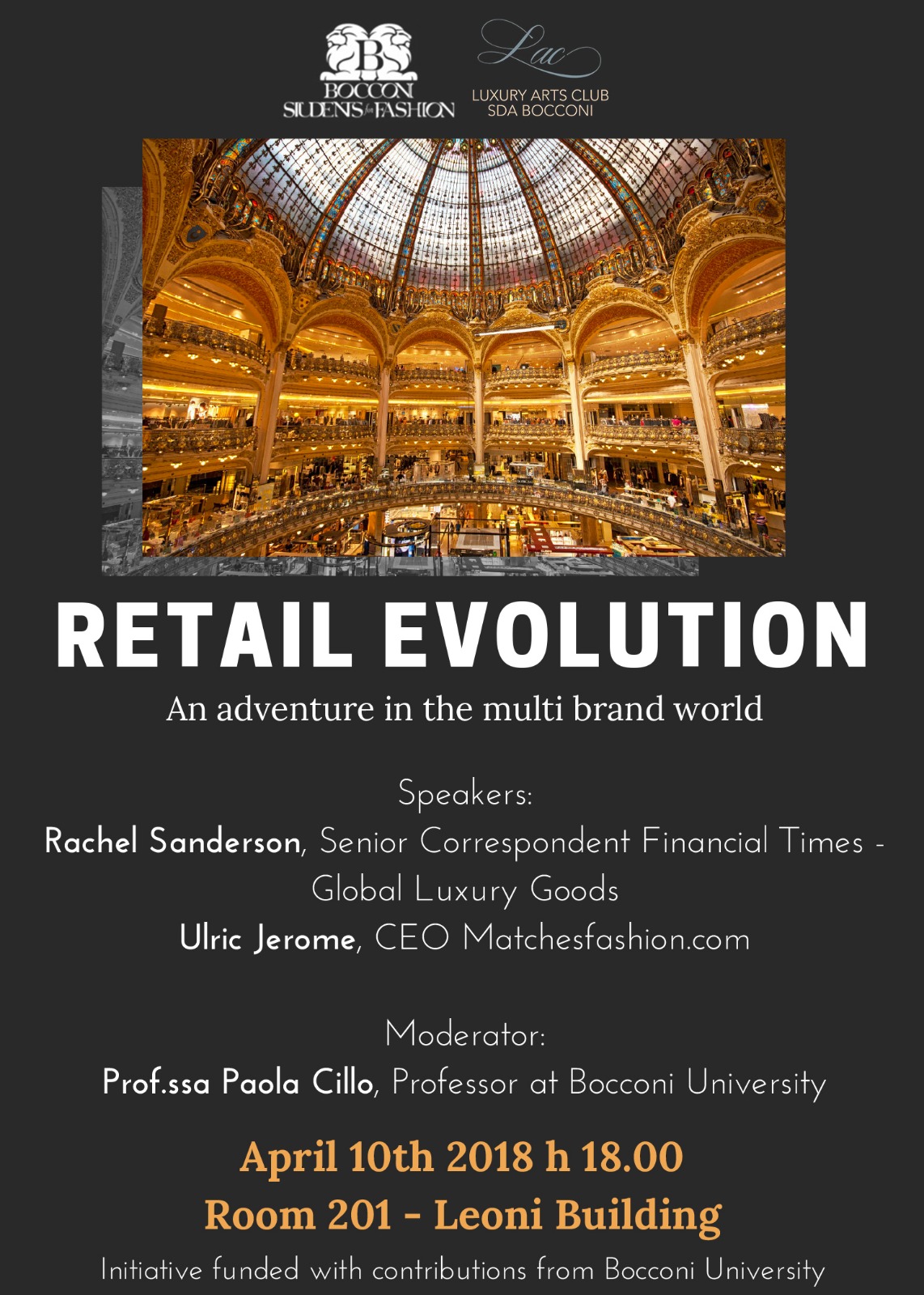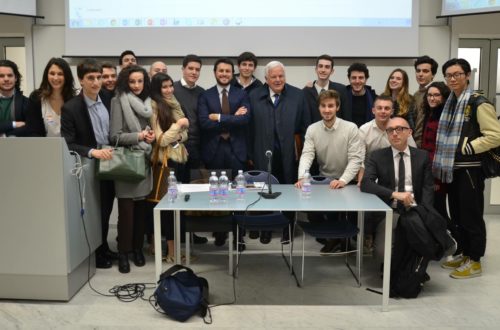On February 15, it was held our second semester first event. The main topic of the event was counterfeit in the fashion world. All the three speakers, Anna Maria Tripodi, Armando Branchini and Iolanda D’Amato pointed out how much the phenomenon has increased over the years, each of them explained his/her point of view through their own past experience and studies.
The first speech was held by the lawyer Anna Maria Tripodi, who is specialized in the subject.
She started with a legal definition “a counterfeit piece is the illicit reproduction of a preexisting brand piece”. The lawyer explained how this phenomenon has increased recently particularly due to globalization. Moreover, she explained that the problem is sometimes faced superficially by the copied brand itself without paying attention to important details such as the choice of suppliers to avoid the concern. The first example of counterfeit she made was the one of the iconic Louis Vuitton’s bags in the 19th century, then she continued with a more contemporary example: the illicit sale at the beaches or in the center of big cities generally made by abusive sellers. Together with the coming of digital era the problem has spread out on the internet and identifying both real sellers and real pieces is becoming more and more difficult.
The production of counterfeit is made generally in countries with the involvement of children, violating basic human rights. A solution introduced to face the problem was the imposition of customs duty. When a piece seems to be counterfeit there is a procedure in which it is blocked at the duty, the problem is the difficulty to identify the original sellers in case of a counterfeit piece. This kind of measure, however, affects only in a temporary perspective, but it cannot have definitive effects.
Consumers are often partners rather than victims of this crime, the majority is aware of this choice, and the fact that sellers are increasing is a consequence of the increase in demand due to the necessity of people of feeling part of an elite.
According to the lawyer to void the problem managers should be more sensitive and trying to find possible solutions such as advertising campaigns to make people aware of the seriousness of the problem.
On the other hand, from a juridical point of view, law has not provided any clear sanctions, every case is different and there is no administrative penalty for this crime.
The second speaker was the vice-chairman of Alta Gamma foundation Armando Branchini. He began talking about the patent that some designers have introduced for some unique pieces, however it is not always possible to obtain a patent particularly for no how pieces. The main damage of counterfeit is reputation, it can happen that some fired employees stole some ideas or projects they were working on at the brand. Unfortunately, this can happen due to a limited intervention of law in this common problem.
A lot of fashion companies concentrate their attention on intangible procedures, such as research and development and in a non-diffused concept introduced by Mr.Branchini: aura. This term comes from Greek and it means something that bright in Fashion we refer to pieces of incredible personality and identity, once the counterfeit comes all the spiritual values attributed to the term vanish.
On average a fashion company spends around 1 % of its revenues in the protection from counterfeit, we are talking about an incredible amount of money around trillions of euros.
Before globalization the production of fake pieces was limited to a small number of counterfeiters, then the distribution channel has increase, and it now works like an organized crime association, with many counterfeiters distributed worldwide, and it is now becoming more and more difficult to identify the real bosses. China is the country of production in order to reduce costs and earn more on sold pieces. Some years ago, the so-called vucumpra, immigrants who sold fake pieces, were the symbol of counterfeit, now their number is decreasing as counterfeit pieces are sold online also by many famous online retailers. Turkey is the country chosen for the redistribution of pieces as it is not a European-Union country. According to Mr. Branchini to limit the problem online retailers should respect the same norms applied to shoppers.
Finally, the professor Iolanda D’Amato talked about the subject concentrating her attention on mix-match pieces, pieces that infiltrated the original production, basically the have some fake processes and some others original. This infiltration in the supply chain process can happen at the begin or at the end of the process. This way pieces are practically equal to the original and buyers cannot recognize the difference paying high price, the result is a larger margin on profit for counterfeiters.
To avoid the problem, the production should be controlled seriously and products should be tracked with monograms or some other way for identification to transform buyers in inspectors.






